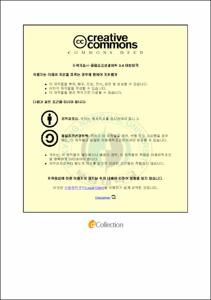고등어(Scomber japonicus) 뼈의 물리화학적 특성 해석
- Abstract
- This study was conducted to characterize physicochemical properties of bones from Mackerel (Scomber japonicus) processing and to utilize backbone as a food resource.
The crude lipid and ash were around 26.8% and 39.7% on the dry basis. The major ash components of the mackerel bone was found to be calcium and phosphorus and the contents in 100 g crude ash were 26.27 g/100g and 15.88 g/100g ash; therefore, calcium phosphorous ratio was 1.6:1. The other minerals of bone were measured 0.11 g/100g of Mg, 0.37 mg/100g of K, and 0.13 mg/100g of Na and Fe, Cu, Zn, Na, K and Mg in each range of 0.21~9.84 mg/100g. The amino acid contents were higher glycine(227 amino acid residues), proline(122 amino acid residues), glutamic acid(117 amino acid residues), and alanine(95 amino acid residues) in order.
Proximate percentage of total lipid, neutral lipid, glycolipid, and phospholipid were shown to be 16.05%, 95%, 2.32%, and 3.15%, respectively. The fatty acid composition of total and neutral lipid were analyzed by gas chromatography. There was not much differences in the fatty acid composition between the total and neutral excepting C22:0 and C22:1. The major fatty acid of the lipids were C14:0, C16:0, C17:0, C18:0, C18:1, C20:1, and C20:5, C22:6, and these acids, C22:6, C16:0, C18:1, C20:5, C18:0, C17:0, C14:0, C20:1, were in high quantity in order. The fatty acid contents of total and neutral lipid were in a range 39.25% and 44.54% for saturated, 27.17% and 21.42% for monounsaturated, and 33.61% and 34.05% for polyunsaturated.
After extraction of lipid from mackerel back bone, ash of it was used for preparation of calcium lactate and calcium citrate. Optimum ashing time of mackerel back bone was 4.5 hours at 600℃ and yield of the ash was 45.41%. Yields of calcium lactate and calcium citrate made from 1 g ash and 25 mL 10, 20, 30, 40, and 50% lactic and citric acid solution were from 165.02% to 679.01%, and from 174.28% to 752.06%, respectively. The calcium lactate and calcium citrate were made by reaction of ash with lactic acid solution and citric and the yields of calcium lactate per ash amount were the highest at 50% lactic acid as 679.01%, and at 50% citric acid as 752.06% which was declined with decrement of acid concentration. Structure of calcium lactate and calcium citrate was confirmed to be Ca(CH3CHOHCO2)2 and [O2CCH2C(OH)(CO2)CH2CO2]2Ca3 through IR analysis. Ca recovery rates of soluble calcium ranged from 40.28% to 50.97% of calcium lactate and from 18.02% to 30.92% of calcium citrate. Calcium lactate contained 1.112 g/100g of Ca, 0.710 g/100g of P, and calcium citrate contained 1.540 g/100g of Ca, 0.935 g/100g of P. The other minerals such as Fe, Cu, Zn, Na, K and Mg in each ranged of 0.69~41.49 mg/100g.
In order to use mackerel backbone directly, under the various boiling conditions, softness characteristics of mackerel backbone were experimented. At first, the strength, hardness, maximum force and yield value of raw mackerel bone were 10.012, 50.025 kgf/cm2, 6.340 kgf and 6.177 kgf/cm2 but softness characteristics of boiled mackerel backbone were 0.404, 1.935 kgf/cm2, 0.234 kgf/cm2 and 0.190 kgf for 45 mins at 121℃. The softness properties of boiled mackerel bone at 45mins at 121℃ were similar to a chew in comparison with bone of canned mackerel in market.
- Issued Date
- 2010
- Awarded Date
- 2010. 2
- Type
- Dissertation
- Publisher
- 부경대학교
- Files in This Item:
-
-
Download
 고등어(Scomber japonicus) 뼈의 물리화학적 특성 해석.pdf
기타 데이터 / 1.16 MB / Adobe PDF
고등어(Scomber japonicus) 뼈의 물리화학적 특성 해석.pdf
기타 데이터 / 1.16 MB / Adobe PDF
-
Items in Repository are protected by copyright, with all rights reserved, unless otherwise indicated.